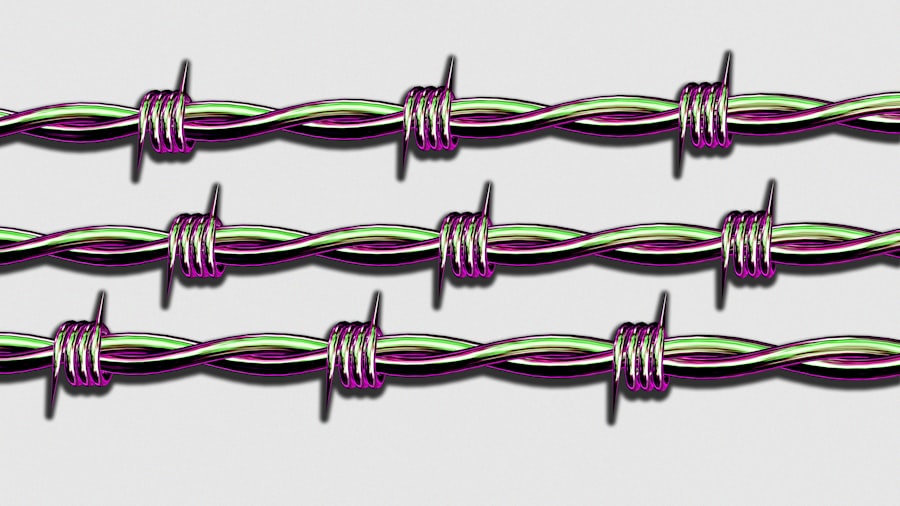When you encounter a fearful situation, your brain springs into action, triggering a cascade of physiological responses. The amygdala, a small almond-shaped structure deep within your brain, plays a pivotal role in processing fear. It acts as an alarm system, detecting threats and signaling other parts of your brain to prepare for a fight-or-flight response.
This response is not just a mental phenomenon; it manifests physically as increased heart rate, rapid breathing, and heightened alertness. Understanding this process is crucial because it highlights how fear can take control of your body and mind, often leading to anxiety and stress. As you delve deeper into the brain’s response to fear, you may realize that this reaction is not solely about immediate danger.
Your past experiences and memories also shape how you perceive threats. The hippocampus, another critical brain structure, helps contextualize fear by recalling previous encounters. This means that if you’ve faced a similar situation before, your brain may react more intensely due to the memories associated with that experience.
Recognizing this interplay between the amygdala and hippocampus can empower you to manage your fear responses more effectively.
Key Takeaways
- The brain’s response to fear is a complex interplay of neural pathways and chemical reactions.
- Chronic stress can have detrimental effects on the brain, leading to changes in structure and function.
- Techniques such as deep breathing and visualization can help calm the amygdala, the brain’s fear center.
- Neuroplasticity allows the brain to rewire itself, offering hope for overcoming fear and anxiety.
- Mindfulness and meditation practices have been shown to reduce fear and anxiety by promoting relaxation and emotional regulation.
The Impact of Chronic Stress on the Brain
Chronic stress can have profound effects on your brain’s structure and function. When you experience prolonged stress, your body continuously produces cortisol, a hormone that can be detrimental in excess. High levels of cortisol can lead to shrinkage in the hippocampus, impairing your memory and learning abilities.
You might find it increasingly difficult to concentrate or recall information, which can exacerbate feelings of anxiety and fear. Understanding this connection between chronic stress and cognitive decline is essential for recognizing the importance of stress management in maintaining mental health. Moreover, chronic stress can also lead to changes in the prefrontal cortex, the area of your brain responsible for decision-making and impulse control.
This can create a vicious cycle where stress leads to poor decision-making, which in turn increases your stress levels. By acknowledging the impact of chronic stress on your brain, you can take proactive steps to mitigate its effects and foster a healthier mental state.
Techniques for Calming the Amygdala

To regain control over your fear responses, it is essential to employ techniques that calm the amygdala. One effective method is deep breathing exercises. When you focus on your breath, you activate the parasympathetic nervous system, which counteracts the fight-or-flight response triggered by the amygdala.
By taking slow, deliberate breaths, you signal to your brain that it is safe to relax. This practice not only helps reduce immediate feelings of fear but also trains your brain to respond more calmly in future stressful situations. Another technique involves visualization.
By imagining a peaceful scene or recalling a moment when you felt safe and secure, you can create a mental environment that soothes your amygdala. This practice can be particularly effective when combined with deep breathing, as it allows you to engage both your body and mind in the calming process. Over time, these techniques can help rewire your brain’s response to fear, making it easier for you to navigate challenging situations with greater ease.
The Role of Neuroplasticity in Rewiring the Brain
| Neuroplasticity Factor | Impact on Brain Rewiring |
|---|---|
| Learning and Memory | Formation of new neural connections and strengthening of existing ones |
| Recovery from Brain Injury | Ability of the brain to reorganize and compensate for lost functions |
| Adaptation to Change | Facilitation of adaptation to new experiences and environments |
| Emotional Regulation | Ability to rewire emotional responses and regulate mood |
Neuroplasticity refers to the brain’s remarkable ability to reorganize itself by forming new neural connections throughout life. This means that even if you’ve struggled with fear or anxiety for years, you have the potential to change your brain’s wiring through intentional practice and effort. Understanding neuroplasticity empowers you to take charge of your mental health by adopting new habits and behaviors that promote resilience and emotional well-being.
Engaging in activities that challenge your brain—such as learning a new skill or practicing mindfulness—can stimulate neuroplasticity. As you expose yourself to new experiences, your brain begins to form new pathways that can replace old, fear-based responses. This process takes time and consistency, but by committing to practices that foster neuroplasticity, you can gradually reshape how your brain reacts to fear and stress.
Mindfulness and Meditation Practices for Fear Reduction
Mindfulness and meditation are powerful tools for reducing fear and anxiety. By cultivating present-moment awareness, you can learn to observe your thoughts and feelings without judgment. This practice allows you to create distance between yourself and your fears, making them feel less overwhelming.
When you engage in mindfulness meditation, you train your mind to focus on the here and now rather than getting lost in worries about the future or ruminating on past experiences. Incorporating mindfulness into your daily routine can significantly impact how you respond to fear. Simple practices like mindful breathing or body scans can help ground you in the present moment, reducing the intensity of fearful thoughts.
Over time, these practices can enhance your emotional regulation skills, enabling you to approach fear with greater clarity and calmness.
The Science of Breathing: How it Affects the Brain

Breathing is often overlooked as a tool for managing fear and anxiety, yet its impact on the brain is profound. When you consciously control your breath—slowing it down or deepening it—you activate the vagus nerve, which plays a crucial role in regulating your body’s stress response. This activation promotes relaxation and reduces feelings of fear by signaling to your brain that it is safe to calm down.
Research has shown that specific breathing techniques can alter brain activity in ways that promote emotional well-being. For instance, practices like diaphragmatic breathing can increase activity in the prefrontal cortex while decreasing amygdala activation. This shift in brain activity helps you regain control over your emotions and reduces the likelihood of being overwhelmed by fear.
By incorporating breathwork into your daily routine, you can harness its power to create a more balanced emotional state.
The Power of Positive Affirmations in Overcoming Fear
Positive affirmations are another effective strategy for combating fear and anxiety. By repeating affirmations that resonate with you—such as “I am safe” or “I am capable”—you can challenge negative thought patterns that contribute to feelings of fear. These affirmations serve as reminders of your strengths and resilience, helping to reframe your mindset in a more positive light.
The science behind affirmations lies in their ability to influence neural pathways in the brain. When you consistently affirm positive beliefs about yourself, you reinforce those beliefs at a neurological level. Over time, this practice can help diminish the power of fear-based thoughts and create a more empowering narrative about your capabilities.
By integrating positive affirmations into your daily routine, you can cultivate a mindset that supports courage and resilience.
The Influence of Physical Exercise on Brain Chemistry
Physical exercise is not only beneficial for your body but also plays a crucial role in enhancing brain chemistry related to mood regulation. When you engage in regular physical activity, your body releases endorphins—neurotransmitters that promote feelings of happiness and reduce pain perception. This natural boost in mood can help counteract feelings of fear and anxiety.
Moreover, exercise has been shown to increase levels of serotonin and dopamine—neurotransmitters associated with feelings of well-being and happiness. By incorporating regular exercise into your routine, you not only improve your physical health but also create a more favorable environment for emotional resilience. Whether it’s going for a run, practicing yoga, or dancing, finding an activity that you enjoy can significantly impact how you manage fear.
Building Resilience Through Cognitive Behavioral Therapy
Cognitive Behavioral Therapy (CBT) is a highly effective approach for building resilience against fear and anxiety. This therapeutic method focuses on identifying negative thought patterns and replacing them with more constructive beliefs. By working with a trained therapist or utilizing self-help resources, you can learn strategies for challenging irrational fears and reframing them in a more realistic light.
Through CBT, you’ll develop skills that empower you to confront fear head-on rather than avoiding it. This exposure therapy aspect allows you to gradually face situations that trigger anxiety while employing coping strategies learned during therapy sessions. Over time, this process helps desensitize you to fear-inducing stimuli, fostering greater confidence in your ability to handle challenging situations.
The Importance of Social Support in Calming the Brain
Social support plays a vital role in managing fear and anxiety effectively.
Engaging in open conversations about your fears allows others to provide reassurance and perspective, which can be incredibly comforting during challenging times.
Additionally, social support has been shown to activate areas of the brain associated with emotional regulation and stress relief. When you’re surrounded by supportive individuals who understand what you’re going through, it can help lower cortisol levels and promote feelings of safety and security. Building strong social connections is essential for creating a supportive network that fosters resilience against fear.
Integrating Holistic Approaches for Long-Term Brain Rewiring
To achieve lasting change in how your brain responds to fear, consider integrating holistic approaches into your life. This may include combining mindfulness practices with physical exercise, nutrition, and social support systems. A holistic approach recognizes that mental health is interconnected with various aspects of well-being—physical health, emotional support, and lifestyle choices all play a role in shaping how you experience fear.
By adopting a comprehensive strategy that addresses multiple facets of well-being, you’re more likely to create sustainable changes in your brain’s wiring over time. Whether it’s through engaging in regular physical activity, practicing mindfulness meditation daily, or nurturing supportive relationships, each element contributes to rewiring your brain for resilience against fear. Embracing this holistic perspective empowers you to take charge of your mental health journey while fostering long-term emotional well-being.
In the journey of rewiring the brain from fear to calm, understanding the underlying psychological mechanisms is crucial. An insightful article that delves into this topic can be found on Unplugged Psychology’s website. This article explores various techniques and therapies that can aid in transforming fear responses into a state of calmness, emphasizing the importance of neuroplasticity and mindfulness practices. For a deeper understanding, you can read more about these transformative approaches by visiting the article on their website. Check out the full article here.
🧠 Your Trauma Is Rewiring Your Brain: Here’s How to Undo It | A Neuroplasticity & Somatic Guide
FAQs
What is the process of rewiring the brain from fear to calm?
The process of rewiring the brain from fear to calm involves actively changing the neural pathways in the brain through various techniques such as mindfulness, cognitive behavioral therapy, and relaxation exercises. This process aims to reduce the brain’s response to fear and increase its ability to remain calm in stressful situations.
What are some techniques for rewiring the brain from fear to calm?
Some techniques for rewiring the brain from fear to calm include mindfulness meditation, deep breathing exercises, progressive muscle relaxation, positive visualization, and cognitive restructuring. These techniques help individuals to reframe their thoughts and emotions, leading to a more calm and balanced state of mind.
How long does it take to rewire the brain from fear to calm?
The time it takes to rewire the brain from fear to calm can vary depending on the individual and the severity of their fear response. Some people may experience significant changes in a matter of weeks, while others may require several months of consistent practice and therapy to see noticeable results.
What are the benefits of rewiring the brain from fear to calm?
The benefits of rewiring the brain from fear to calm include reduced stress and anxiety, improved emotional regulation, better decision-making abilities, enhanced overall well-being, and a greater sense of control over one’s emotions and reactions. This can lead to a more fulfilling and balanced life.
Can anyone rewire their brain from fear to calm?
Yes, anyone can rewire their brain from fear to calm with the right techniques, practice, and support. While it may be more challenging for some individuals, with dedication and consistency, it is possible to change the brain’s response to fear and cultivate a more calm and resilient mindset.




